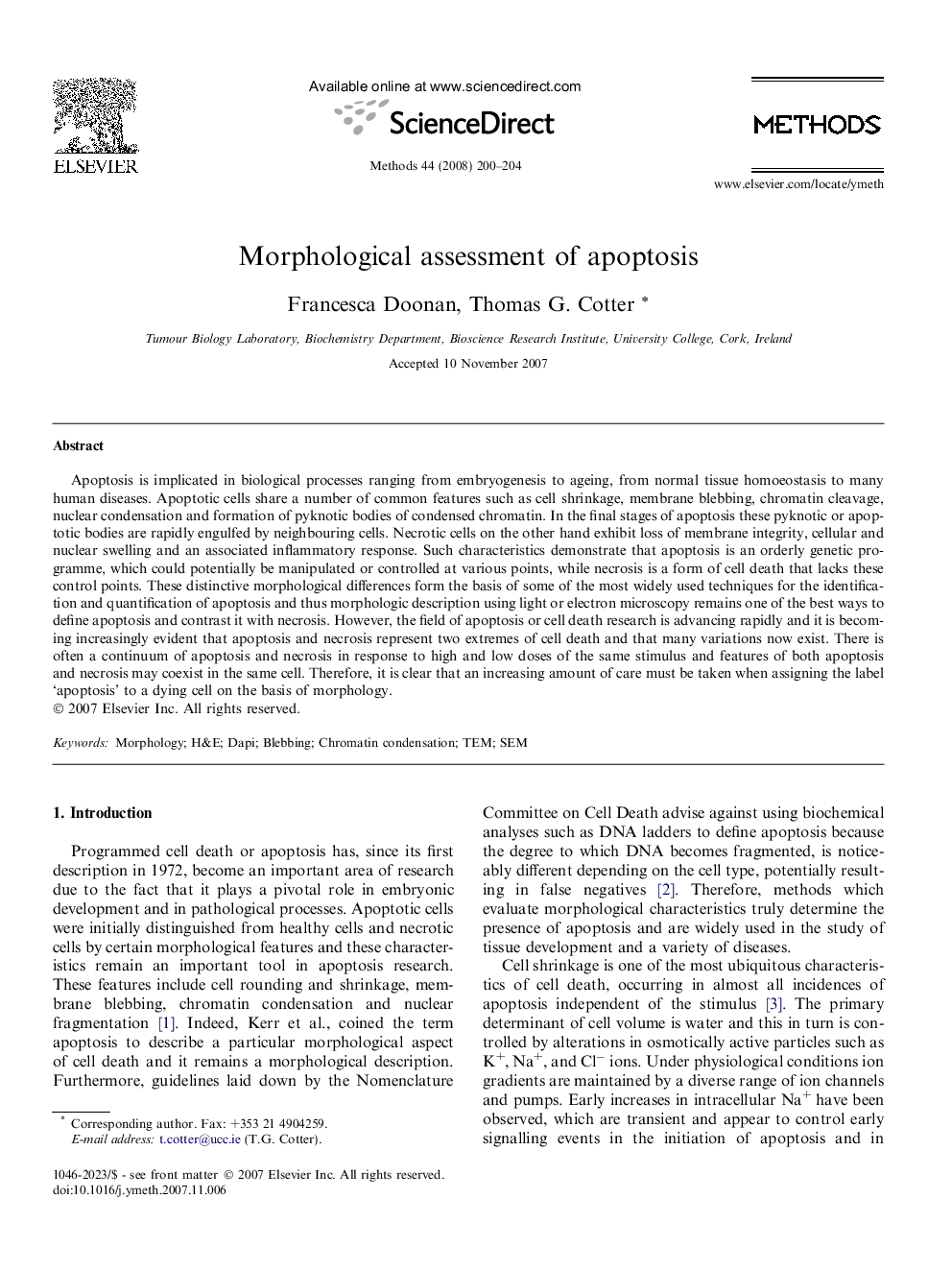| کد مقاله | کد نشریه | سال انتشار | مقاله انگلیسی | نسخه تمام متن |
|---|---|---|---|---|
| 1994013 | 1064725 | 2008 | 5 صفحه PDF | دانلود رایگان |
عنوان انگلیسی مقاله ISI
Morphological assessment of apoptosis
دانلود مقاله + سفارش ترجمه
دانلود مقاله ISI انگلیسی
رایگان برای ایرانیان
کلمات کلیدی
موضوعات مرتبط
علوم زیستی و بیوفناوری
بیوشیمی، ژنتیک و زیست شناسی مولکولی
زیست شیمی
پیش نمایش صفحه اول مقاله

چکیده انگلیسی
Apoptosis is implicated in biological processes ranging from embryogenesis to ageing, from normal tissue homoeostasis to many human diseases. Apoptotic cells share a number of common features such as cell shrinkage, membrane blebbing, chromatin cleavage, nuclear condensation and formation of pyknotic bodies of condensed chromatin. In the final stages of apoptosis these pyknotic or apoptotic bodies are rapidly engulfed by neighbouring cells. Necrotic cells on the other hand exhibit loss of membrane integrity, cellular and nuclear swelling and an associated inflammatory response. Such characteristics demonstrate that apoptosis is an orderly genetic programme, which could potentially be manipulated or controlled at various points, while necrosis is a form of cell death that lacks these control points. These distinctive morphological differences form the basis of some of the most widely used techniques for the identification and quantification of apoptosis and thus morphologic description using light or electron microscopy remains one of the best ways to define apoptosis and contrast it with necrosis. However, the field of apoptosis or cell death research is advancing rapidly and it is becoming increasingly evident that apoptosis and necrosis represent two extremes of cell death and that many variations now exist. There is often a continuum of apoptosis and necrosis in response to high and low doses of the same stimulus and features of both apoptosis and necrosis may coexist in the same cell. Therefore, it is clear that an increasing amount of care must be taken when assigning the label 'apoptosis' to a dying cell on the basis of morphology.
ناشر
Database: Elsevier - ScienceDirect (ساینس دایرکت)
Journal: Methods - Volume 44, Issue 3, March 2008, Pages 200-204
Journal: Methods - Volume 44, Issue 3, March 2008, Pages 200-204
نویسندگان
Francesca Doonan, Thomas G. Cotter,